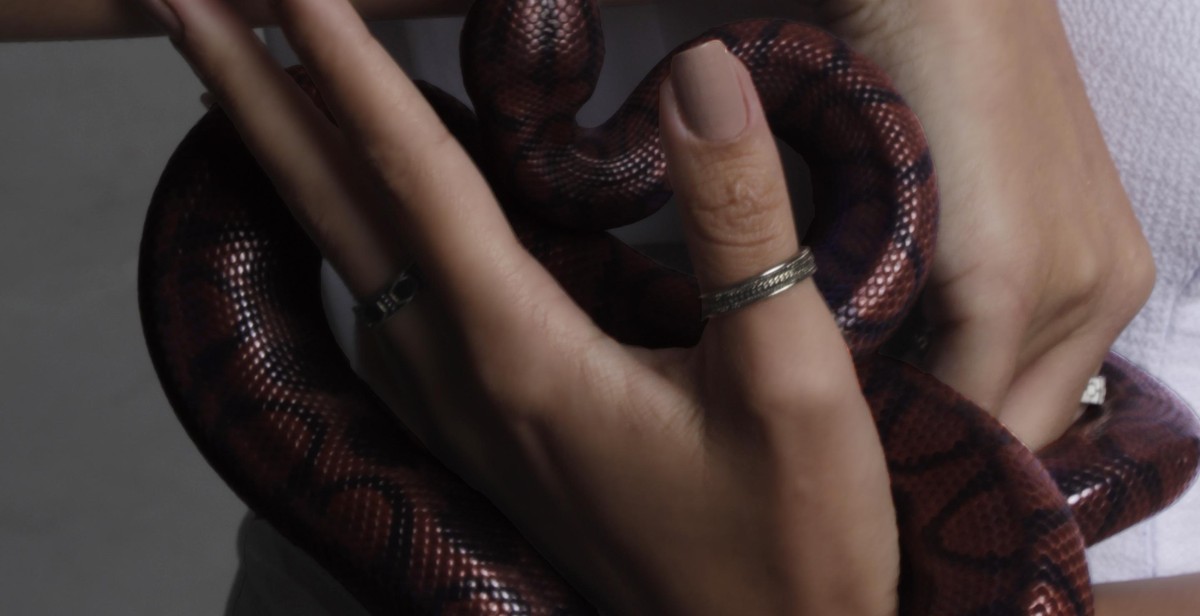Introduction
Snakes are fascinating creatures that have been kept as pets for centuries. They are low-maintenance pets that can be a great addition to your household if you are willing to put in the effort to care for them properly. However, caring for a snake requires some knowledge and understanding of their basic husbandry and handling guidelines.
Why Care for a Pet Snake?
Aside from their beauty and mysteriousness, snakes can make great pets for many reasons. They are quiet, don’t need to be walked, and can be left alone for long periods of time. They also don’t require a lot of space, making them a good option for those living in apartments or smaller homes. Additionally, snakes can be an educational experience for children and adults alike, teaching them about biology, evolution, and the importance of conservation.
What to Expect
Before deciding to care for a pet snake, it’s important to understand what to expect. Snakes can live for several years, so you’ll need to be committed to their care for the long haul. They also require specific environmental conditions, such as temperature and humidity, to thrive. And while snakes are generally low-maintenance pets, they do require regular feeding and cleaning.
In this article, we’ll provide you with basic husbandry and handling guidelines to help you care for your pet snake and ensure they live a happy and healthy life.

Choosing the Right Snake
Before bringing a pet snake into your home, it is important to research different snake species to determine which one is best for you. Consider factors such as size, temperament, and care requirements.
Researching Snake Species
When researching snake species, it is important to consider their natural habitat, diet, and behavior. Some snakes require specific environmental conditions, such as high humidity or a certain temperature range. Others may have specialized dietary needs, such as live prey or a specific type of food. Additionally, some snakes may be more active or docile than others, which can affect how they interact with their owners.
It is also important to research the potential health issues and lifespan of the snake species you are considering. Some species may be prone to certain health problems or have a shorter lifespan than others.
Selecting a Healthy Snake
When selecting a snake, it is important to choose a healthy individual. Look for a snake that appears alert and active, with clear eyes and smooth skin. Avoid snakes that have milky or cloudy eyes, as this may be a sign of illness. Additionally, check for any signs of respiratory issues, such as wheezing or labored breathing.
It is also important to ask the seller or breeder about the snake’s feeding schedule and behavior. A healthy snake should have a good appetite and be able to eat without difficulty. Additionally, ask about the snake’s temperament and handling requirements to ensure that it is a good fit for your lifestyle and experience level.
| Things to Consider When Choosing a Snake |
|---|
| Size |
| Temperament |
| Care Requirements |
| Natural Habitat |
| Diet |
| Behavior |
| Health Issues |
| Lifespan |
By taking the time to research different snake species and select a healthy individual, you can ensure that your pet snake is happy and thriving in its new home.
Housing Your Snake
One of the most important aspects of caring for a pet snake is providing it with a suitable enclosure. A proper enclosure will not only keep your snake safe and secure, but it will also provide the necessary environmental conditions for your snake to thrive.
Selecting a Proper Enclosure
The size of the enclosure will depend on the size of your snake. Generally, the enclosure should be at least as long as the snake’s length and twice as wide as the snake’s width. For example, a six-foot snake would require an enclosure that is at least six feet long and four feet wide.
The enclosure should also have a secure lid to prevent the snake from escaping. A screen lid is recommended as it allows for proper ventilation.
Setting Up the Enclosure
The enclosure should be lined with a substrate, such as newspaper, paper towels, or reptile carpet. Avoid using sand or gravel as they can cause impaction if ingested by the snake.
The enclosure should also have a hiding spot for the snake to retreat to when it feels stressed or threatened. This can be a commercially available hide or a simple box with a hole cut in it.
Temperature and humidity are also important factors to consider when setting up the enclosure. A temperature gradient should be provided with a warm side and a cool side. The warm side should be between 85-90°F and the cool side should be between 75-80°F. A heat source, such as a heat lamp or under-tank heater, can be used to achieve the proper temperature gradient.
The humidity level in the enclosure should be maintained between 50-60%. This can be achieved by providing a water bowl and misting the enclosure daily.
Overall, providing a suitable enclosure is essential for the health and well-being of your pet snake. With proper husbandry and care, your snake can live a long and healthy life.

Feeding Your Snake
Understanding your snake’s diet is crucial to its overall health and wellbeing. Snakes are carnivorous and require a diet of whole prey items, such as mice and rats. It is important to note that snakes have different dietary requirements based on their species, age, and size. As a responsible pet owner, it is your responsibility to research and understand your snake’s specific dietary needs.
Feeding Schedule
Snakes have different feeding schedules based on their age and species. Younger snakes typically require more frequent feedings, while adult snakes may only need to be fed every 1-2 weeks. It is important to establish a consistent feeding schedule for your snake and stick to it. Snakes thrive on routine and consistency, and sudden changes to their feeding schedule can cause stress and digestive issues.
Quantity
The quantity of food your snake requires also depends on its age and species. As a general rule, prey items should be no larger than the widest part of your snake’s body. Overfeeding can lead to obesity and other health issues, while underfeeding can lead to malnutrition and stunted growth. It is important to monitor your snake’s body condition and adjust their feeding schedule and quantity as needed.
| Snake Species | Feeding Frequency | Prey Size |
|---|---|---|
| Ball Python | Every 1-2 weeks | No larger than the widest part of their body |
| Corn Snake | Every 1 week – 10 days | No larger than the widest part of their body |
| King Snake | Every 1-2 weeks | No larger than the widest part of their body |
It is important to remember that snakes are natural predators and require whole prey items to thrive. Feeding your snake live prey can be dangerous for both your snake and the prey item, as the prey can injure your snake in self-defense. It is recommended to feed your snake pre-killed frozen prey items, which can be easily thawed and warmed up before feeding.
Maintaining Your Snake’s Health
Regular health checks are essential to keep your pet snake healthy and happy. You should monitor your snake’s behavior, appetite, and physical appearance regularly. Any changes in these areas could be a sign of an underlying health issue.
Common Health Issues
Snakes are generally hardy creatures, but they can still experience health problems. Some of the most common health issues that pet snakes face include:
- Respiratory infections: Snakes can develop respiratory infections if their enclosure is too humid or if they are exposed to drafts. Symptoms of respiratory infections include wheezing, lethargy, and nasal discharge.
- Mites: Mites are tiny parasites that feed on a snake’s blood. They can cause anemia, skin irritation, and other health problems. Signs of a mite infestation include excessive scratching and visible mites on the snake’s skin.
- Mouth rot: Mouth rot, also known as infectious stomatitis, is a bacterial infection that affects a snake’s mouth. Signs of mouth rot include swollen gums, pus around the teeth, and difficulty eating.
- Parasites: Snakes can also develop internal parasites, such as roundworms or tapeworms. Symptoms of a parasite infestation include weight loss, diarrhea, and lethargy.
If you notice any of these symptoms or any other changes in your snake’s behavior or physical appearance, it’s important to take them to a veterinarian that specializes in reptiles. Early detection and treatment can help prevent serious health problems and ensure your snake stays healthy for years to come.
Handling Your Snake
Proper handling techniques are important to ensure the safety and well-being of both you and your pet snake. When handling your snake, it is important to approach them calmly and confidently. Sudden movements or loud noises can startle your snake and cause them to bite or become defensive.
Proper Handling Techniques
When picking up your snake, support their entire body with both hands. This helps them feel more secure and can prevent them from becoming agitated or stressed. Avoid grabbing your snake by the tail, as this can cause injury or stress.
It is important to handle your snake regularly to help them become accustomed to human interaction. This can help prevent aggressive behavior and make it easier to care for them in the long run.
Handling Frequency and Duration
How often you handle your snake will depend on their individual temperament and species. Some snakes may need to be handled daily, while others may only need to be handled once or twice a week.
When starting to handle your snake, it is important to keep handling sessions short and gradually increase the duration over time. This helps your snake adjust to being handled and prevents them from becoming overwhelmed or stressed.
It is important to pay attention to your snake’s body language while handling them. Signs of stress or discomfort can include hissing, striking, or trying to escape. If your snake displays these behaviors, it may be best to end the handling session and try again later.
| Do: | Don’t: |
|---|---|
|
|
Conclusion
In conclusion, caring for a pet snake requires a lot of responsibility and commitment. It is crucial to ensure that you provide your pet snake with the right environment, diet, and handling to thrive. Remember that snakes are sensitive creatures that require a lot of attention and care.
Some key takeaways to remember when caring for your pet snake include:
- Providing a suitable habitat with the right temperatures and humidity levels
- Feeding your snake a balanced diet appropriate for its size and species
- Handling your snake with care and caution, avoiding sudden movements or loud noises that may startle it
- Regularly monitoring your snake’s health and behavior to identify any potential health issues
- Consulting with a veterinarian who specializes in reptiles if you have any concerns about your snake’s health or well-being
By following these basic husbandry and handling guidelines, you can help ensure that your pet snake lives a long, happy, and healthy life. Remember that owning a pet snake is a unique and rewarding experience that requires a lot of dedication and care, but with the right approach, you can enjoy a fulfilling relationship with your scaly companion.
